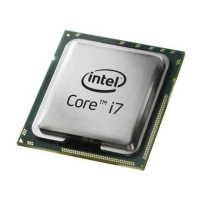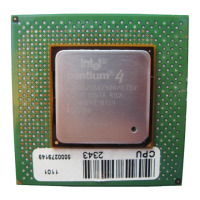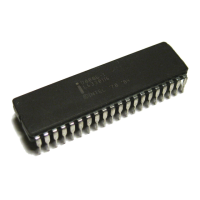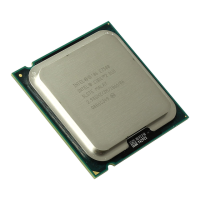PECI Interface
54 Thermal/Mechanical Specifications and Design Guide
7.1.1 PECI Client Capabilities
The processor PECI client is designed to support the following sideband functions:
• Processor and DRAM thermal management
• Platform manageability functions including thermal, power, and error monitoring
• Processor interface tuning and diagnostics capabilities (Intel Interconnect BIST).
7.1.1.1 Thermal Management
Processor fan speed control is managed by comparing Digital Thermal Sensor (DTS)
thermal readings acquired usingPECI against the processor-specific fan speed control
reference point, or T
CONTROL
. Both T
CONTROL
and DTS thermal readings are accessible
using the processor PECI client. These variables are referenced to a common
temperature, the TCC activation point, and are both defined as negative offsets from
that reference.
PECI-based access to the processor package configuration space provides a means for
Super IO (SIO) or other platform management devices to actively manage the
processor, memory power and thermal features. Details on the list of available power
and thermal optimization services can be found in Section 7.1.2.6.
7.1.1.2 Platform Manageability
PECI allows read access to certain error and status monitoring registers within the
processor It also provides insight into thermal monitoring functions such as TCC
activation timers and thermal error logs as covered in Section 7.1.2.6.
7.1.1.3 Processor Interface Tuning and Diagnostics
Intel
®
Core™ i7-3960X, i7-3970X processor Extreme Edition, Intel
®
Core™ i7-3930K
processor, and Intel
®
Core™ i7-3820 processor Intel Interconnect Built-In Self Test
(Intel IBIST) allows for in-field diagnostic capabilities in memory controller interfaces.
PECI provides a port to execute these diagnostics using its PCI Configuration read and
write capabilities.
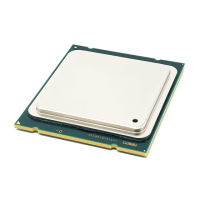
